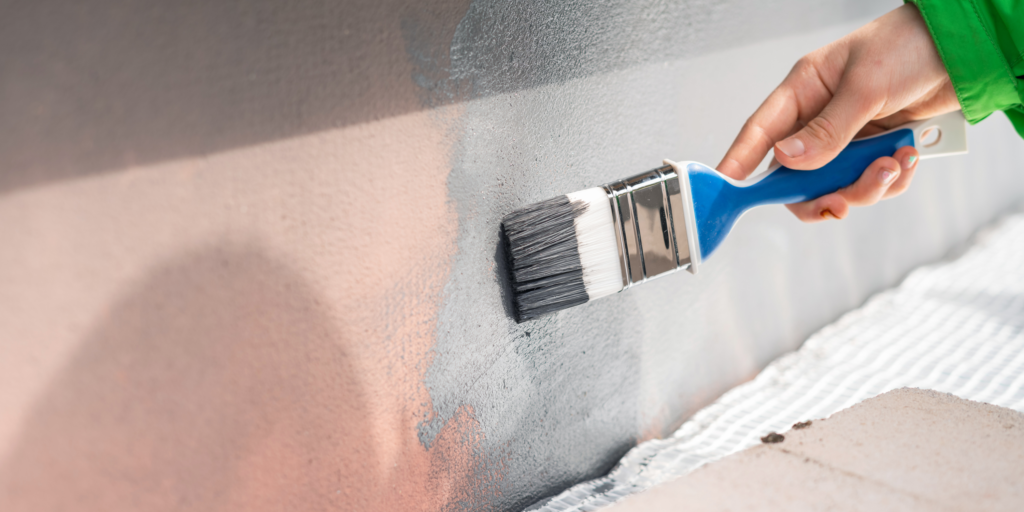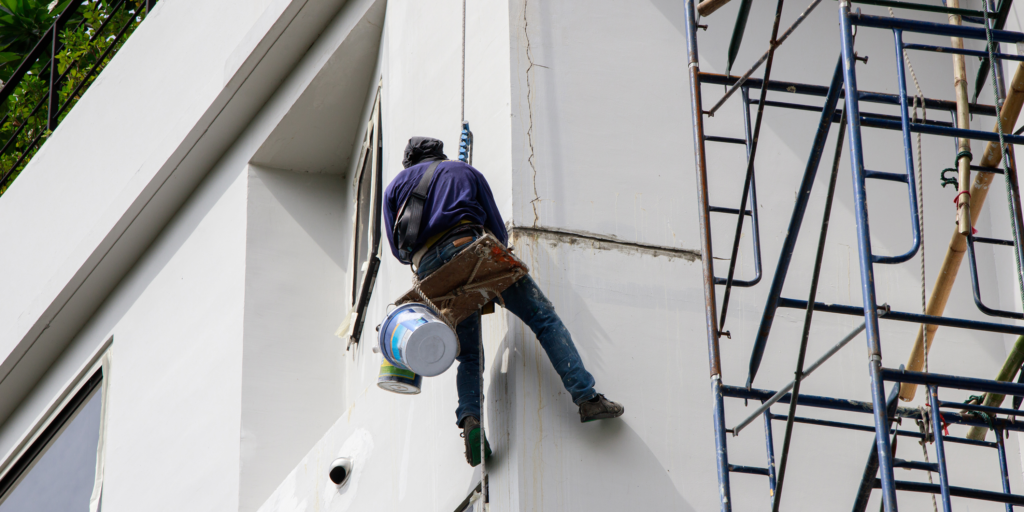We explore the interesting topic of exterior home painting and how weather affects it. Painting your home’s exterior improves its curb appeal and protects it from the elements. Before you start painting, you should know how weather can affect your endeavor. Let’s see how weather and temperature affect home painting, from blistering summer heat to unexpected rain showers!
Understanding the impact of weather on exterior painting
The weather is important when painting your home’s exterior. Weather affects paint adhesion, drying, and durability. To get long-lasting and attractive results, you must understand this influence.
Extreme temperatures might complicate painting. High temperatures can speed up paint drying, causing uneven application and cracking or peeling. However, excessive cold might inhibit paint curing, resulting in poor adhesion and durability.
Exterior painting also depends on humidity. Air moisture delays drying and increases mildew growth on painted surfaces. Choose a low-humidity day for optimal drying.

Rain and severe winds can damage freshly painted exteriors. Rain can wash away wet paint before it cures, and strong winds can blow dust or debris onto freshly sprayed surfaces, creating an unattractive finish.
To avoid these weather difficulties, paint during mild temperatures (50-85°F) and moderate humidity (40-70%). Choose days with clear skies to reduce rain and wind threats.
Despite careful planning, weather changes may occur during your project. Monitoring local weather forecasts and having suitable coverings for unexpected rain showers or gusty winds is essential.
Understanding how weather conditions affect exterior painting processes and outcomes—from temperature extremes affecting paint application to high humidity slowing drying times—will help you complete home improvement projects that withstand Mother Nature.
Factors to consider when choosing a time to paint
When painting the exterior of your home, timing is key for a great and long-lasting finish. The best time to paint depends on various things.
Consider the weather. Choose a dry, low-humidity season. Rain or high humidity can create paint stains or peeling.
Temperature matters too. Extreme heat or cold can impair paint drying and adhesion. Generally, avoid painting in extreme heat or cold.
Also, consider wind speed and direction. Wind can make it hard to manage your brush strokes and get particles in wet paint.
Exterior painting also depends on the time of day. Painting at midday when temperatures are highest may speed drying but cause uneven application owing to evaporation.
Always check the forecast for unexpected weather changes within your chosen timeframe. Unexpected rainstorms or temperature changes could undo your hard work.
Before commencing an external painting project, consider these criteria to improve your chances of getting professional-looking results that will last without repeated touch-ups.
How temperature affects the painting process and results
Painting the exterior of your home requires knowledge of how temperature influences the process and results. Temperature affects paint adhesion, drying, and performance.
Extreme temperatures can damage paint application. Paint may dry too quickly in hot weather before bonding with the surface. However, too much cold can slow or stop drying.
Temperature also impacts paint consistency. Painting becomes thicker and more viscous in cooler temperatures, making it harder to apply uniformly. Hotter temperatures cause thin and runny paint.
various paints require various temperatures for optimal application. For best performance, latex paints need 50°F to 85°F. Warmer temperatures (40°F to 90°F) improve oil-based paint performance.
Consider changing conditions throughout the day as well as appropriate painting temperatures. Seasons and areas often have large daytime and overnight temperature differences.
Always check weather forecasts before painting outdoors, especially if you’re working on a major project that could take days or weeks.
Understanding how temperature affects exterior house painting jobs allows homeowners to choose the best time to paint while avoiding weather hazards.
Best weather conditions for exterior painting
Weather conditions matter while painting your home’s exterior. Painting is ideal in dry, warm conditions between 50°F and 85°F. These ideal conditions allow paint to dry and cure, creating a smooth, durable finish.
Extreme temperatures might impact paint adhesion, so avoid painting on hot or cold days. High heat can dry the paint too rapidly, cracking and peeling, while frigid conditions may inhibit drying.
When painting the exterior, humidity should also be considered. High humidity can delay drying and cause blistering or mildew on freshly painted surfaces.

Choose a day with low humidity (below 70%) for best results. This will help your paint dry smoothly without flaws.
Another consideration is wind speed. Windy days can cause dust to adhere to wet paint or cause uneven application. Before painting the exterior, wait for a calm day with a little breeze.
To paint the outside of your property professionally, choose good weather. A beautiful and lasting finish that will safeguard your property for years requires moderate temperatures between 50°F and 85°F, low humidity below 70%, and quiet breezes.
Preparing for unexpected weather changes
Weather can be a major obstacle when painting your home’s exterior. You never know when rain or strong winds will derail your endeavor. Do not worry! With planning and adaptability, you can handle these unpredictable weather circumstances.
First and foremost, check the weather before painting. Short-term and long-term predictions can help you predict weather trends. Forecasts aren’t always correct, but they can give you a rough idea.
If there’s a danger of rain or heavy winds, postpone painting. Painting in damp weather can produce uneven drying and poor adherence, while strong gusts can leak paint or blow debris onto freshly painted surfaces.
You should also have a backup plan in case of bad weather during painting. If rain unexpectedly falls, have tarps or plastic sheets to swiftly cover exposed surfaces. This will prevent water damage to freshly painted surfaces.
Consider outdoor-specific quick-drying paints. Drying faster than typical paints makes them less susceptible to sudden showers or drizzles.
Weather fluctuations may cause delays. To avoid unfavorable weather, don’t rush the painting procedure. It could result in poor outcomes. Break when needed and let each coat of paint dry before applying another.
Conclusion
It’s obvious that weather and temperature affect house exterior painting. Understanding how these elements affect your project can help you make smart choices and get the best results.
Use humidity, precipitation, wind speed, and temperature to decide when to paint. Exterior painting is best in temperate temperatures, low humidity, light rain or snowfall, and quiet breezes. These circumstances prevent paint from bubbling and breaking by drying and adhering to it.
Temperature has an impact on various aspects of painting. Warmer temperatures speed drying but accelerate solvent or water-based solution evaporation. However, colder temperatures inhibit drying but improve paint application and adhesion.
Monitoring local forecasts before your painting endeavor will help you plan for weather changes. Be flexible with your schedule and have tarps or covers ready for unexpected rain showers.
You may improve the beauty and protection of your home’s exterior by considering weather conditions and adopting safeguards based on seasonal temperature changes. Happy painting!

